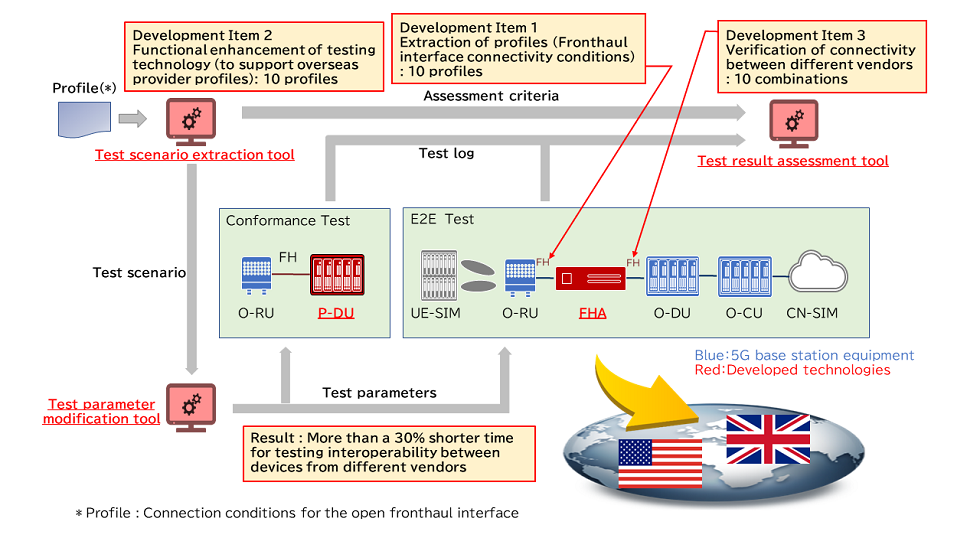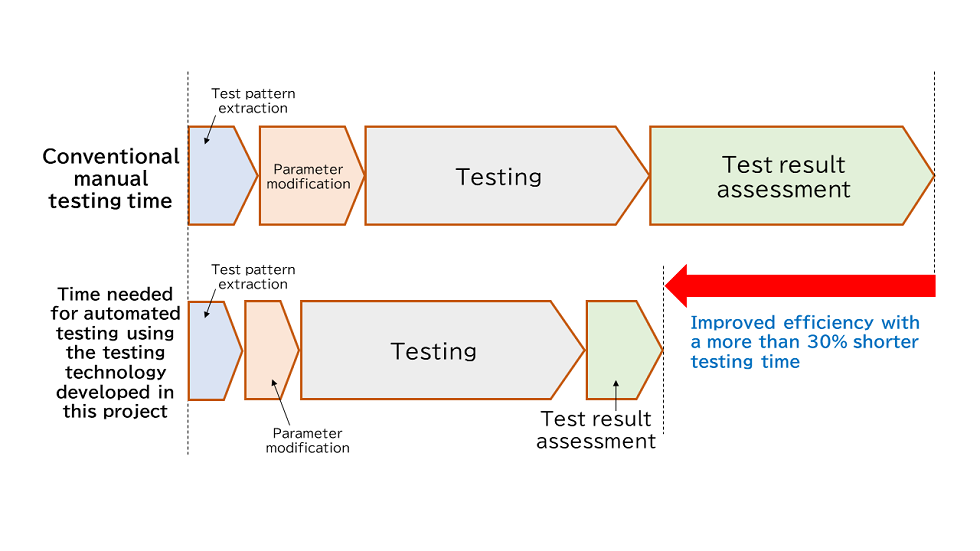NEC and Fujitsu are currently conducting research and development of a technology for testing the interoperability of post-5G base stations compliant with O-RAN (open radio access network) specifications. A connectivity testing environment using this technology was constructed at NEC’s UK laboratories and Fujitsu’s U.S. laboratories, and tests were conducted from August 2021 to June 2023.
By automating the end-to-end process of extracting optimal test scenarios, generating parameters, and determining acceptability of test results, the two companies have succeeded in improving efficiency. The interoperability testing time for base stations of different vendors was reduced by more than 30%, assuming the commercial environment of overseas telecommunications carriers (operators).
Going forward, the two companies will utilise the testing technology developed in this project for joint testing with operators and base station equipment vendors in Japan and overseas to shorten the time required to deploy systems that combine O-RAN compliant base station equipment from different vendors. They will aim to contribute to the modernisation of the telecommunications infrastructure market by supporting the global spread and development of open 5G networks.
1. Background
As digital transformation (DX) advances in various industries, fifth-generation mobile communications systems (5G) are being deployed globally as the infrastructure for DX. In the post-5G era, ultra-low latency, simultaneous connectivity, and other 5G functions will be further enhanced and become more widespread.
This will lead to even lower power consumption and wider support for virtualisation of networks, further driving the expansion of the telecommunications infrastructure market, including the replacement of existing base station equipment.
To provide customers with higher quality communication services, operators are increasingly choosing the most suitable base station equipment from a variety of vendors for use in their own networks.
In response, the O-RAN Alliance, an industry group composed of telecommunications carriers and manufacturers from around the world, has promoted standardisation for connections between multiple base station devices and has formulated conditions for connecting base stations from different vendors.
However, testing the operability of connected devices is time-consuming because it must be performed by the operator, and even longer time is required if re-testing must be conducted to resolve defects. This, therefore, hinders the deployment of equipment conforming to O-RAN specifications.
To address this problem, NEC and Fujitsu have established test environments in the UK and North America, which are foreseen as upcoming O-RAN markets, as part of the above NEDO project. From August 2021 to June 2023, NEC’s UK laboratories and Fujitsu’s U.S. laboratories conducted operational testing using a combination of profiles and base station equipment vendors used by various international operators in actual commercial environments in efforts to develop a technology that streamlines the process and shortens the time required to verify interoperability.

2. Results of the joint efforts
NEC and Fujitsu have jointly developed a technology to automate the testing of interoperability between base station equipment from various vendors at the O-RAN fronthaul. They have enhanced the functionality to support the actual connection conditions used by operators in different countries and regions.
This technology includes proprietary technologies such as the FrontHaul Analyser (FHA), which connects base station equipment to verify fronthaul protocol; the Pseudo-DU (P-DU), which performs unit testing of radio units (RU); a test scenario extraction tool that automates each verification process; a test parameter modification tool; and a test result assessment tool.

Interoperability at the O-RAN fronthaul was tested using multiple combinations of base station equipment from different vendors and operating conditions assuming actual commercial environments of operators in Europe and North America at the two companies’ laboratories in the UK and the U.S. Automation of testing using the technology developed through the project reduced testing time by more than 30% compared with conventional manual testing.
Reducing the interoperability testing time will enable operators to shorten the lead time for deploying systems that combine O-RAN compliant base station equipment from different vendors. This will contribute to the advancement of open configurations in 5G networks currently in widespread use, as well as the construction of new networks in anticipation of future post-5G deployments.
Comment on this article below or via Twitter: @VanillaPlus OR @jcvplus






